#Anatidae
Text

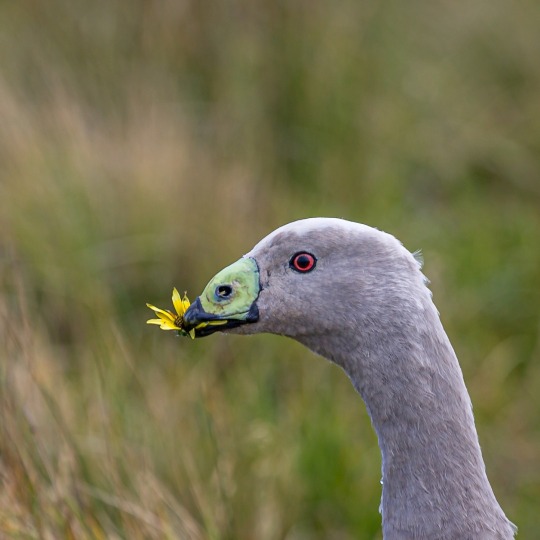
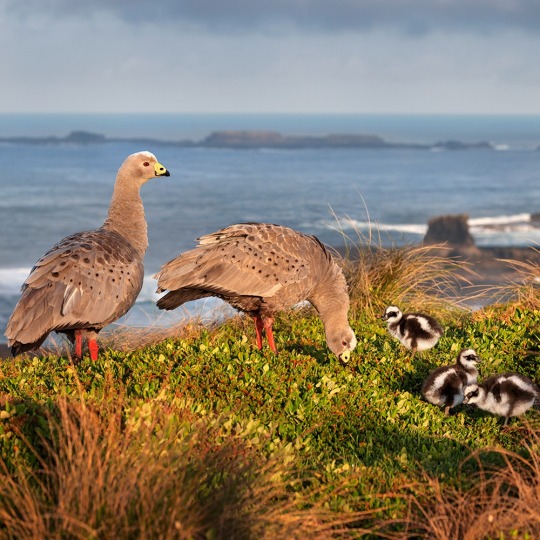

Cape Barren Geese (Cereopsis novaehollandiae), family Anatidae, order Anseriformes, order found in various spotty areas on the southern coast of mainland Australia and Tasmania
photographs by Russel Spence, Jeremy Edwards, Jarryd Guilfoyle, and Tracie Louise (BirdLife Australia)
2K notes
·
View notes
Text

Made this for ASAW, didn't post it because I made better things but might as well post it now
#mute swan#cygnus olor#cygnus#anatidae#anseriformes#bird#bird art#aromantic#aro#non partnering#romance repulsed#art#digital art#artists on tumblr#tw eyestrain#cw eyestrain#wauk wauk
733 notes
·
View notes
Photo

Northern Shoveler (Spatula clypeata)
© Nigel Blake
5K notes
·
View notes
Photo

A male and female cinnamon teal (Spatula cyanoptera) in Redwood City, California, USA
by Ron Wolf
#cinnamon teal#ducks#birds#waterfowl#spatula cyanoptera#spatula#anatidae#anseriformes#aves#chordata#wildlife: california#wildlife: usa
2K notes
·
View notes
Text

[1896/10977] Bufflehead - Bucephala albeola
Order: Anseriformes
Family: Anatidae (ducks, geese and swans)
Subfamily: Anatinae (dabbling ducks)
Photo credit: Ian Hearn via Macaulay Library
815 notes
·
View notes
Text
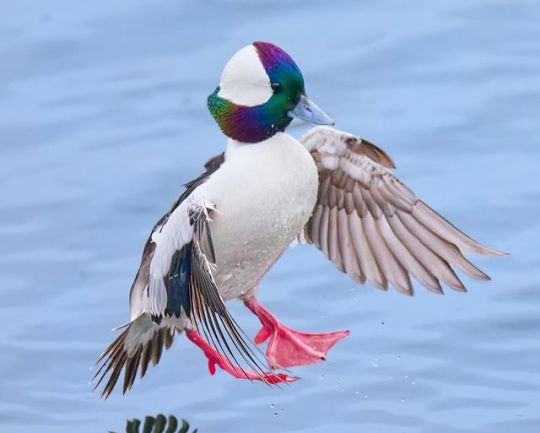
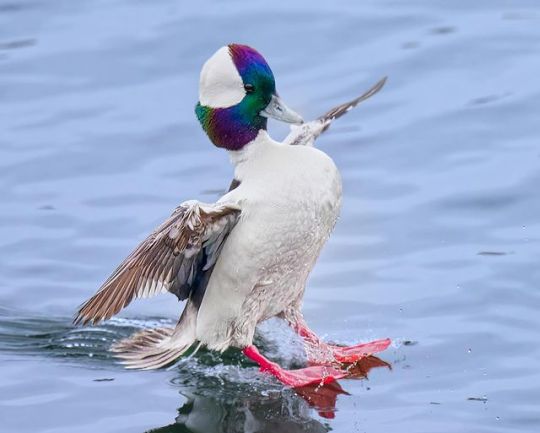
Bufflehead
149 notes
·
View notes
Photo


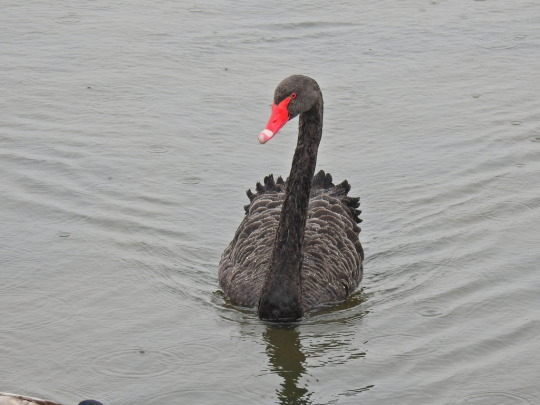
Surprising Black Swans
A popular ornamental waterbird in Europe and North America, the black swan (Cygnus atratus) is a species of swan endemic to Australia and New Zealand. In both their native and introduced ranges they can be found near bodies of fresh or salt water, especially lakes and wetlands with plenty of aquatic vegetation. The species is highly nomadic, and migrate based on yearly rainfall patterns.
Black swans are the second largest swan species, with a maximum weight of 9 kg (19.8 lbs) and a wingspan of 2 m (6.6 ft). Despite being smaller, black swans have the longest neck of any swan. Males, also known as cobs, are slight larger than females-- aka pens. As their name suggests, C. atratus has black plumage, although the flight feathers on their wings are white. The beak is a bright red with a white stripe, thought to be indication of an individuals health and sexual maturity.
Like all swans, the black swan mates for life. In addition to their high fidelity rates, C. atratus is also unique for its high rates of homosexual couples; about 25% of pairings are between individuals of the same sex (primarily males). These mates are known to steal eggs from other nests or form temporary ‘throuples’ with a member of the opposite sex, and some research has shown that homosexual couples are more than twice as likely to successfully raise their young as heterosexual couples.
The mating season for black swans occurs from February to September. While pairs are generally solitary, groups will nest in the same area to increase the chances of finding a mate and decrease the risk of predation. Pairs form when one an individual approaches another and initiates a ritual known as the Triumph Ceremony, in which the individual extends their wings and calls out. If the mate is receptive, they will repeat the gesture, and the pair will then go through a synchronous dance to solidify their pairing. This ceremony is repeated multiple times throughout each breeding season to strengthen the pair’s bond and affirm that between parent and chick.
Females lay 5 or 6 eggs in a clutch, and will alternate incubating them with her partner for 35 to 48 days. After hatching, the young- also known as cygnets- are fairly precocial but will stay in or near the nest for 2 to 3 weeks. It takes up to 6 months for them to completely lose their grey down and grow their adult plumage, though they remain with their family units for up to 9 months. Once they have fully fledged, juveniles join groups of other cygnets for 1-2 years, at which point they become sexually mature.
Black swans can present an intimidating threat to potential predators, so there are few animals that attack fully grown adults. However, eggs and young cygnets can be a target for ravens, birds of prey, and rodents. C. atratus themselves are herbivores and feed primarily on aquatic vegetation.
Conservation status: the IUCN has classified the black swan as Least Concern, and their native populations are stable.
If you like what I do, consider leaving a tip or buying me a ko-fi!
Photos
Damian Shaw
Richard Tommy Campion
Susan Marley via iNaturalist
#black swan#Anseriformes#Anatidae#swans#water fowl#fowl#water birds#birds#freshwater fauna#freshwater brids#lakes#lake birds#wetlands#wetland birds#urban fauna#urban birds#oceania#australia
315 notes
·
View notes
Photo
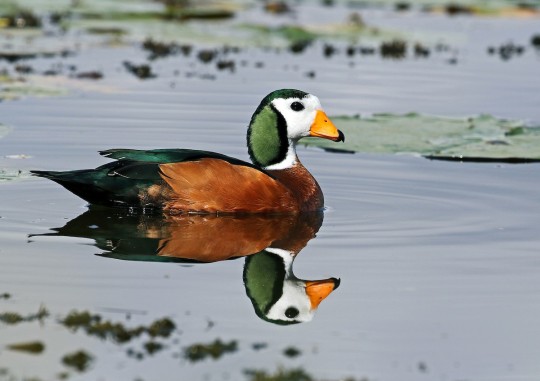
African Pygmy Goose (Nettapus auritus)
© Andrew Spencer
686 notes
·
View notes
Text
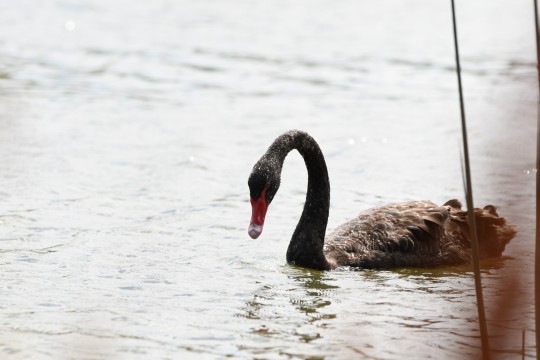

pretty black swan ❤❤
#birds#birding#ornithology#special interest#bird#bird photography#birdblr#australian birds#black swan#swan#anatidae
31 notes
·
View notes
Text
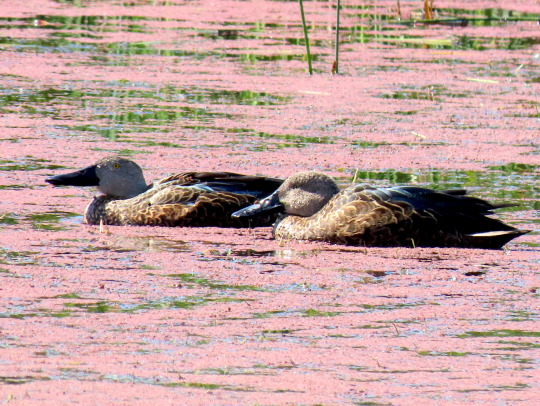
Cape Shoveler
Spatula smithii
Rondevlei Nature Reserve, South Africa
-34.060064, 18.497836
by gigilaidler
#birds#cape shoveler#duck#ducks#spatula#anatidae#family anatidae#anseriformes#order anseriformes#waterfowl#south africa#south african birds#rondevlei nature reserve#m#on birds
64 notes
·
View notes
Text
Mute swan (Cygnus olor) photos I took 09/03/2024, Cromford canal, Derbyshire, UK
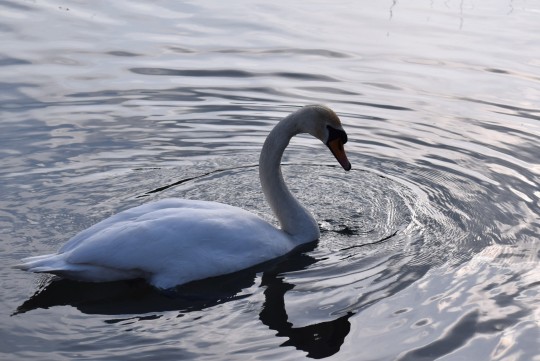

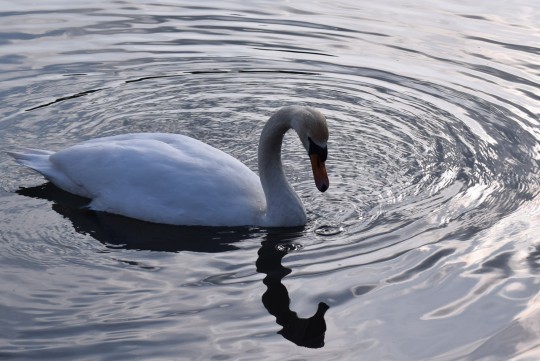
#nature#nature photography#animals#animal#wildlife#british nature#animal photography#wildlife photography#wild#wild animals#mute swan#cygnus olor#white swan#swans#swan#cygnus#anatidae#waterfowl#anseriformes#water birds#bird watching#birding#birds#bird photography#birdwatching#bird#ornithology#british wildlife#british birds#wild animal
23 notes
·
View notes
Text

Cotton Pygmy-Geese (Nettapus coromandelianus), family Anatidae, order Anseriformes, India
photograph by Rajesh Chaube
2K notes
·
View notes
Text

Was out walking by a canal last weekend, there was someone walking by with 4 dogs (only one was on a lead) and this swan hissed at them, so it's my hero and I had to take some photos to draw it
#mute swan#swan#cygnus olor#cygnus#anatidae#anseriformes#waterfowl#bird#ornithology#bird art#birb#art#digital art#artists on tumblr#tw eyestrain#cw eyestrain#wauk wauk#fave art
36 notes
·
View notes
Photo

Around 11 million years ago, during the late Miocene, much of what is now northern Honshu in Japan was submerged under fairly deep ocean waters. This offshore environment was inhabited by a variety of ancient sea-going tetrapods such as turtles, desmostylians, seal-like allodesmines, archaic baleen whales, and early oceanic dolphins… and also one very unexpected bird.
Meet the flightless marine swan.
Annakacygna hajimei, also known as the Annaka short-winged swan, was the same size as a modern black swan at about 1.2m long (~4'), but had a combination of features unlike any of of its living close relatives. Its head was proportionally large, and it had a long spoon-shaped bill like a shoveler duck, lined with comb-like structures for filter-feeding on plankton. It also had widened hips that would have helped keep it stable floating in rough waters, its tail was highly mobile and muscular, and its feet resembled those of diving birds like loons.
With thickened heavy bones and shortened forearms it was clearly completely unable to fly, but its reduced wings appear to have been highly specialized rather than just vestigial. Its shoulders were extra flexible while its wrists had a more limited range of motion, allowing it to fold its wings into a distinctive half-raised position similar to modern mute swans.
It probably used its wings and tail to perform elaborate "busking" visual displays, and also to carry and protect its young on its back while out at sea – basically making itself into a living swan boat.
———
Nix Illustration | Tumblr | Twitter | Patreon
#science illustration#paleontology#paleoart#palaeoblr#annakacygna#swan#cygnini#anserinae#anatidae#anseriformes#bird#dinosaur#art#friendship ended with Cygnus falconeri; now Annakacygna is best extinct swan
1K notes
·
View notes
Text
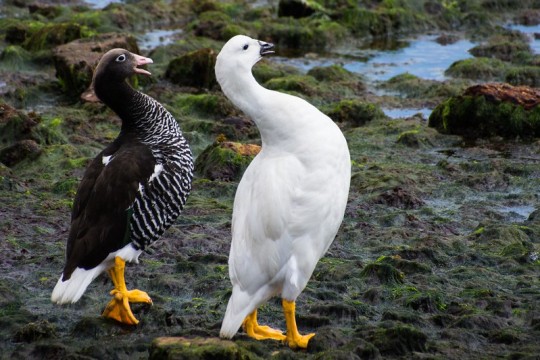
A pair of kelp geese (Chloephaga hybrida) in Antarctica
by Barbara Evans
#kelp goose#geese#waterfowl#chloephaga hybrida#chloephaga#anatidae#anseriformes#aves#chordata#wildlife: antarctica
1K notes
·
View notes
Text
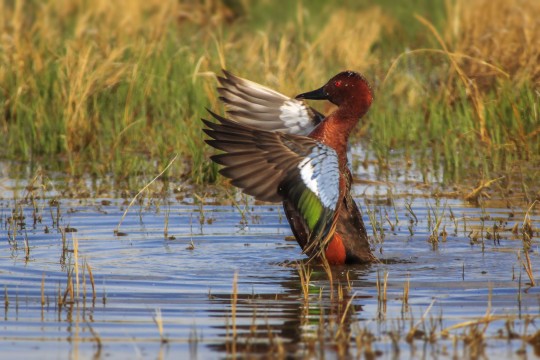
[2453/11080] Cinnamon teal - Spatula cyanoptera
Order: Anseriformes
Family: Anatidae (ducks, geese and swans)
Subfamily: Anatinae (dabbling ducks)
Photo credit: Matthew Pendleton via Macaulay Library
246 notes
·
View notes